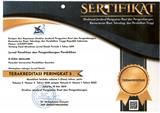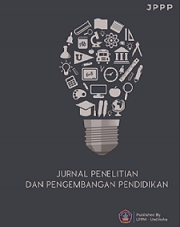Documentary Film Based History Learning Media Material on the Japanese Occupation in Pontianak
DOI:
https://doi.org/10.23887/jppp.v8i2.65921Keywords:
Learning Media, Documentary Film, Japanese OccupationAbstract
History teachers in senior high schools need variations in the use of learning media in the classroom. This research aims to design history learning media based on documentary films of Japanese occupation and analyze the feasibility of the product. The methodology used was research and Development (R&D) with the ADDIE model. The subjects involved in the research consisted of the head of curriculum, history teachers, and students. The data collection methods used were observation, interview, and assessment questionnaires. Then, the data analysis used was qualitative and quantitative. The validation results include material expert validation getting a good category and media expert validation getting a good category. While the teacher's assessment got a good category, the assessment of students in the small group trial got a good category, and the large group trial got a good category. This finding shows that the history learning media based on the documentary film of the Japanese Occupation is feasible to use in learning history. Therefore, this media is the main alternative in providing variations in the use of learning media in the classroom.
References
Afrillyan, M., Syahputra, D., & Ardianto, D. T. (2021). Membangun Kesadaran Sejarah. 4(1), 85–94. DOI: https://doi.org/10.17509/historia.v4i1.27035
Andriyani, C., & Susilawati, S. A. (2019). Pengembangan Media Pembelajaran Digital Film Dokumenter Terhadap Kerusakan Lingkungan Di Gunung Lawu Pada Materi Potensi Sumber Daya Alam Di Mts Negeri Surakarta 01 [Universitas Muhammadiyah Surakarta]. http://eprints.ums.ac.id/id/eprint.
Astuti, I. (2023). Video Pembelajaran Geografi SMA Berbasis Kearifan Lokal untuk Meningkatkan High Order Thinking Skills ( HOTS ). Jurnal Penelitian dan Pengembangan Pendidikan, 7(1), 49–57. https://doi.org/https://doi.org/10.23887/jppp.v7i1.55275. DOI: https://doi.org/10.23887/jppp.v7i1.55275
Borish, D., Cunsolo, A., Mauro, I., Dewey, C., & Harper, S. L. (2021). Moving images, Moving Methods: Advancing Documentary Film for Qualitative Research. International Journal of Qualitative Methods, 20, 1–14. https://doi.org/10.1177/16094069211013646. DOI: https://doi.org/10.1177/16094069211013646
Dannari, G. L., & Muna, U. L. (2019). Pemanfaatan Media Pembelajaran Majalah Dan Kahoot Dalam Kegiatan Pembelajaran Sejarah Di Sman 1 Panggul Kelas Xi Ips 1. Jpsi, 2(2), 153–163. DOI: https://doi.org/10.17977/um033v2i22019p153
Dewi, N. S., Parmiti, D. P., & Sukmana, A. I. W. I. Y. (2023). Media Video Animasi Pada Mata Pelajaran Pendidikan Agama Hindu dan Budi Pekerti. Jurnal Penelitian dan Pengembangan Pendidikan, 7(2), 223–230. https://doi.org/10.23887/jppp.v7i2.60269. DOI: https://doi.org/10.23887/jppp.v7i2.60269
Diansari, A. A. R., Suratman, B., & Soejoto, A. (2017). The Effect of Problem-Based Learning Model, Learning Audio Visual Media and Internship on Student’s Soft Skill. International Journal of Academic Research in Business and Social Sciences, 7(9), 333–341. https://doi.org/10.6007/ijarbss/v7-i9. DOI: https://doi.org/10.6007/IJARBSS/v7-i9/3329
Firmansyah, H., Putri, A. E., & Maharani, S. (2022). Penggunaan Film Dokumenter sebagai Media Pembelajaran Sejarah. Edukatif: Jurnal Ilmu Pendidikan, 4(2), 2754–2762. https://edukatif.org/index.php/edukatif/article/view/2493. DOI: https://doi.org/10.31004/edukatif.v4i2.2493
Fitzgerald, A., & Lowe, M. (2020). Acknowledging Documentary Filmmaking as not Only an Output but a Research Process: A Case for Quality Research Practice. International Journal of Qualitative Methods, 19, 1–7. https://doi.org/10.1177/1609406920957462. DOI: https://doi.org/10.1177/1609406920957462
Hasbi, S., & Zafri, Z. (2022). Pengembangan Handout Sejarah Berbasis Gambar Untuk Melatih Berpikir Kritis Peserta Didik Di SMAN 1 Padang Panjang. Jurnal Kronologi, 4(1), 297–305. https://doi.org/https://doi.org/10.24036/jk.v4i1.356. DOI: https://doi.org/10.24036/jk.v4i1.356
Hidayat, F., & Nizar, M. (2021). Model Addie (Analysis, Design, Development, Implementation and Evaluation) Dalam Pembelajaran Pendidikan Agama Islam. Jurnal Inovasi Pendidikan Agama Islam (JIPAI), 1(1), 28–38. https://doi.org/10.15575/jipai.v1i1.11042. DOI: https://doi.org/10.15575/jipai.v1i1.11042
Husmiati, R. (2017). Kelebihan Dan Kelemahan Media Film Sebagai Media Pembelajaran Sejarah. Jurnal Sejarah Lontar, 7(2), 61. https://doi.org/10.21009/lontar.072.06. DOI: https://doi.org/10.21009/LONTAR.072.06
Irfan Ismail, A., Rini Octavia, E., & Kuncorobroto, I. (2019). Creative Strategy Of Documentary Films To Embrace College Students Viewers. 207(Reka), 321–324. https://doi.org/10.2991/reka-18.2018.7. DOI: https://doi.org/10.2991/reka-18.2018.70
Kurnia, T. D., Lati, C., Fauziah, H., & Trihanton, A. (2019). Model ADDIE Untuk Pengembangan Bahan Ajar Berbasis Kemampuan Pemecahan Masalah Berbantuan 3D. Seminar Nasional Pendidikan Matematika, 1(1), 516–525. file:///C:/Users/ACER/Downloads/844-1705-1-PB-1.pdf.
Maskun, M., Sumargono, S., Pratama, R. A., & Maydiantoro, A. (2021). The Effectiveness of Historical Documentary Films as Information Technology in Improving Student Learning Outcomes. International Journal of Education and Information Technologies, 15, 183–190. https://doi.org/10.46300/9109.2021.15.19. DOI: https://doi.org/10.46300/9109.2021.15.19
McCowan, T. (2019). The Role of Education in Development. In: Higher Education for and beyond the Sustainable Development Goals. Palgrave Macmillan, Cham. https://doi.org/https://doi.org/10.1007/978-3-030-19597-7_2. DOI: https://doi.org/10.1007/978-3-030-19597-7_2
Nababan, N. (2020). Pengembangan Media Pembelajaran Berbasis Geogebra Dengan Model Pengembangan Addie Di Kelas XI SMAN 3 Medan. Jurnal Inspiratif, 6(1), 37–50. https://doi.org/https://doi.org/10.24114/jpmi.v6i1.19657.
Pratama, P. (2017). Pengembangan Media Film Dokumenter Dalam Pembelajaran Sejarah di SMA Negeri 1 Binjai [Universitas Negeri Medan]. https://digilib.unimed.ac.id/id/eprint/27918.
Puspasari, R. (2019). Pengembangan Buku Ajar Kompilasi Teori Graf dengan Model Addie. Journal of Medives : Journal of Mathematics Education IKIP Veteran Semarang, 3(1), 137. https://doi.org/10.31331/medivesveteran.v3i1.702. DOI: https://doi.org/10.31331/medivesveteran.v3i1.702
Putri, R. G., Titin, & Santoso, R. (2019). Film dokumenter pemanfaatan tumbuhan berkhasiat obat sebagai media pembelajaran materi sistem pencernaan. Jurnal Pendidikan Sains Indonesia, 7(2), 121–131. https://doi.org/https://doi.org/10.24815/jpsi.v7i2.14808. DOI: https://doi.org/10.24815/jpsi.v7i2.14808
Ratmanto, A. (2018). Beyond The Historiography: Film Dokumenter Sejarah Sebagai Alternatif Historiografi di Indonesia. SASDAYA: Gadjah Mada Journal of Humanities, 2(2), 405–414. https://doi.org/https://doi.org/10.22146/sasdayajournal.36452. DOI: https://doi.org/10.22146/sasdayajournal.36452
Rizkinta, E. N., Tanjung, S., & Wau, Y. (2019). Developing Learning Media Integrated With Documentary Film on Social Science Subject in Class V Sdn 014680 Buntu Pane Academic Year 2018/2019. International Journal of Education, Learning and Development, 7(6), 30–60. https://doi.org/https://doi.org/10.37745/ijeld.2013. DOI: https://doi.org/10.37745/ijeld.2013
Sanjaya, P. A. (2021). Konstruksi Pembelajaran Sejarah Kontekstual Melalui Pendekatan Regresif Model Problem Based Learning. Candra Sangkala, 3(1), 1–10. https://doi.org/10.23887/jcs.v3i1.33918. DOI: https://doi.org/10.23887/jcs.v3i1.33918
Setiawati, E., Hidayat, B., & Hartati, U. (2021). Development of Historical Learning Media Based on Documentary Film to Strengthen Student’s Understanding of Local History. International Journal of Research and Review, 8(5), 177–186. https://doi.org/10.52403/ijrr.20210525. DOI: https://doi.org/10.52403/ijrr.20210525
Sugiyono. (2021). Metode Penelitian Kuantitatif, Kualitatif dan R&D. Alfabeta.
Susanto, H., Irmawati, I., Akmal, H., & Abbas, E. W. (2021). Media Film Dokumenter dan Pengaruhnya Terhadap Keterampilan Berpikir Kritis Siswa. HISTORIA : Jurnal Program Studi Pendidikan Sejarah, 9(1), 65. https://doi.org/10.24127/hj.v9i1.2980. DOI: https://doi.org/10.24127/hj.v9i1.2980
Tampubolon, J., & Tamba, E. F. (2022). The Effect of Accompaniment Music on the Concentration and Learning Outcomes of Grade VIII Students in Alpha Omega Education Tutoring Center. Journal of Classroom Action Research, 1(2), 16–22. https://doi.org/10.52622/jcar.v1i2.92. DOI: https://doi.org/10.52622/jcar.v1i2.92
Utaminingsih, S., & Cahyani, A. (2020). The Documentary Films as Learning Media for Education of Pancasila and Citizenship. International Journal of Education and Research, 8(11), 257–262.
Wagner, D.-A. (2018). Teachers’ Use of Film in the History Classroom: A Survey of 19 High School Teachers in Norway. Nordidactica – Journal of Humanities and Social Science Education Nordidactica, 21–44. https://journals.lub.lu.se/nordidactica/article/view/19061.
Wirawan, G., & Sukarini, N. (2021). Analisis Keterampilan Abad 21 Dalam Pembelajaran Ips Secara Daring Di Smp Negeri 5 Jember. SANDHYAKALA Jurnal Pendidikan Sejarah, Sosial dan Budaya, 2(1), 25–35. https://doi.org/10.31537/sandhyakala.v2i1.408. DOI: https://doi.org/10.31537/sandhyakala.v2i1.408
Downloads
Published
How to Cite
Issue
Section
License
Copyright (c) 2024 Reyhan Yafi, Rhoma Aria Yuliantri

This work is licensed under a Creative Commons Attribution-ShareAlike 4.0 International License.
Authors who publish with the Jurnal Penelitian dan Pengembangan Pendidikan agree to the following terms:
- Authors retain copyright and grant the journal the right of first publication with the work simultaneously licensed under a Creative Commons Attribution License (CC BY-SA 4.0) that allows others to share the work with an acknowledgment of the work's authorship and initial publication in this journal.
- Authors are able to enter into separate, additional contractual arrangements for the non-exclusive distribution of the journal's published version of the work (e.g., post it to an institutional repository or publish it in a book), with an acknowledgment of its initial publication in this journal.
- Authors are permitted and encouraged to post their work online (e.g., in institutional repositories or on their website) prior to and during the submission process, as it can lead to productive exchanges, as well as earlier and greater citation of published work. (See The Effect of Open Access)







